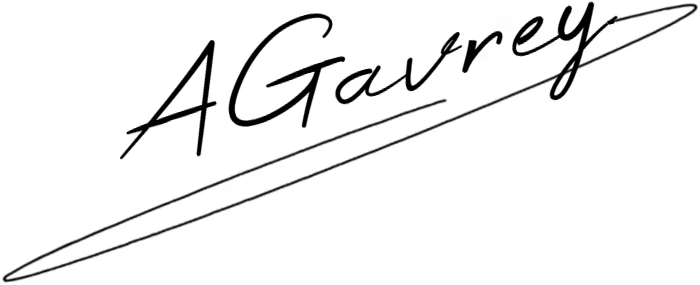Understanding Tax Refunds in Utah (UT)
Tax refunds are often anticipated as financial relief for residents, and understanding the Utah (UT) tax refund process can help taxpayers maximize their returns and reduce errors. In Utah, tax refunds pertain primarily to income taxes collected by the Utah State Tax Commission and reflect the overpayment of taxes based on earned income, deductions, and credits. This guide will walk Utah taxpayers through the essential details regarding eligibility, claim processes, timelines, and useful strategies to ensure a smooth refund experience.
Eligibility for Utah State Tax Refunds
Not all taxpayers are eligible for refunds, as refunds are only granted when taxes paid exceed the amount owed. For Utah residents, refunds apply if they have overpaid on state income taxes. Additionally, residents claiming credits, such as the Utah Earned Income Tax Credit (EITC) or the Child Tax Credit, may also be eligible for refunds. The eligibility criteria, however, require taxpayers to file a complete and accurate tax return, reporting all income sources and disclosing any deductions or credits that they qualify for.
For non-residents earning income within Utah, the state may also issue refunds if their withheld taxes exceed their actual tax liabilities. These cases often involve careful filing and adherence to Utah's tax codes, and taxpayers may benefit from consulting with tax professionals who understand state and federal tax laws.
Refund eligibility also depends on filing methods. Individuals who file their returns electronically through services like the IRS's Free File or commercial software can expect different processing times compared to those who submit paper filings. Electronic filings are faster, reducing potential delays.
How to File for a Utah Tax Refund
To claim a refund, taxpayers must complete and file the TC-40 Utah Individual Income Tax Return form, which outlines taxable income, deductions, credits, and withheld taxes. Accurate reporting is critical to avoid errors that may delay refunds. Filers should gather all essential documents, including W-2 or 1099 forms, to accurately report income and withholding amounts.
Utah residents are encouraged to file electronically using certified e-filing software or through the Utah State Tax Commission's Taxpayer Access Point (TAP). The TAP system allows individuals to check the status of their refunds, review submitted documents, and update personal information securely. Those who choose to file by mail may experience longer processing times due to physical handling and verification steps.
Once submitted, the state reviews each filing for accuracy. Common filing errors include incorrect calculations, omitted income, and missing deductions. To prevent such errors, taxpayers should double-check entries or seek assistance if necessary.
Estimated Timeline for Utah Tax Refunds
The timeline for receiving a Utah tax refund varies depending on the filing method. Electronic filings typically process faster, with refunds issued within two to three weeks of submission. In contrast, paper filings can take up to twelve weeks to process due to manual verification.
The following table provides a breakdown of estimated processing times based on the filing method:
| Filing Method | Processing Time |
|---|---|
| Electronic Filing | 2-3 Weeks |
| Paper Filing | Up to 12 Weeks |
The Utah State Tax Commission recommends filing electronically for faster refunds. Refund delays can occur if the filing contains errors, the IRS needs to verify information, or if identity theft prevention measures are triggered.
Common Reasons for Utah Tax Refund Delays
Tax refunds may be delayed for several reasons, especially if errors or inconsistencies are present in the filing. One common cause of delay is incorrect banking details for direct deposit. Ensure that your account number and routing number are accurate before submitting the return, as incorrect entries can result in refund delays.
Another reason for delays is when taxpayers claim credits requiring additional verification. Credits like the Earned Income Tax Credit (EITC) may prompt the Utah State Tax Commission to verify income qualifications, which can extend the processing time by several weeks.
In some cases, identity verification measures are triggered if a taxpayer’s Social Security number appears compromised. Taxpayers may need to verify their identity before receiving refunds in these instances.
Key Deductions and Credits Impacting Utah Tax Refunds
Various deductions and credits impact the refund amount Utah residents receive. These include standard deductions, the Utah Personal Exemption, and credits like the Utah EITC and Education Credits. Understanding each can help reduce taxable income and maximize refund potential.
- Standard Deduction: Utah residents can claim a standard deduction based on their filing status, reducing taxable income directly.
- Utah Personal Exemption: While federal personal exemptions are phased out, Utah maintains personal exemptions that further reduce taxable income for residents.
- Education Credits: Tuition and related expenses may qualify for credits that directly reduce tax liabilities.
Additionally, credits for families, such as the Child Tax Credit or Family Size Credit, offer significant refunds for those eligible. These credits are based on income and family size, providing substantial savings for qualifying taxpayers.
Using Direct Deposit for Faster Utah Tax Refunds
For taxpayers expecting a refund, opting for direct deposit offers a faster, more secure refund delivery method than traditional mail. Direct deposit eliminates the waiting period for mailed checks and provides quicker access to funds. Taxpayers must enter accurate bank details to ensure their refunds are deposited correctly.
Direct deposit is also a convenient choice for splitting refunds among multiple accounts, such as checking, savings, and retirement funds. By dividing the refund, taxpayers can earmark portions for savings goals, reducing the temptation to spend the full refund immediately.
Using direct deposit can also prevent issues related to lost or delayed mail. In cases where refunds do not arrive as expected, Utah residents can access the Taxpayer Access Point (TAP) to verify the refund status and resolve any issues.
Steps for Tracking Utah Tax Refund Status
After filing, Utah taxpayers can monitor their refund status using the Where's My Refund? tool available through the Utah State Tax Commission’s website. To track their refunds, filers need specific information, including their Social Security Number (SSN) and the refund amount claimed on their return.
The online tool provides updates through three stages: Return Received, Refund Approved, and Refund Sent. Taxpayers can log in anytime to check their status and identify any delays.
If refunds are delayed beyond the typical timeline, taxpayers may contact the Utah State Tax Commission directly for support. They may be required to verify personal details to ensure the request's authenticity.
Tips for Maximizing Your Utah Tax Refund
There are several strategies Utah residents can use to maximize their tax refunds. First, taxpayers should ensure they claim all eligible deductions and credits, as these directly lower taxable income and increase refund amounts. Double-checking forms and documents for accuracy can also prevent unnecessary delays.
Another key strategy involves filing early. Tax refunds are processed on a first-come, first-served basis, meaning that early filers often receive refunds sooner. Filing electronically and opting for direct deposit further speeds up the refund process.
Finally, individuals may consider adjusting their withholding amounts if they received a smaller refund than expected. Properly managing withholdings ensures individuals do not overpay taxes throughout the year, allowing them to retain more of their income instead of awaiting a refund.
Conclusion
Receiving a Utah tax refund is a financial opportunity for many residents, providing additional funds through tax credits and overpayment adjustments. Understanding the eligibility, filing processes, and refund timelines can help Utah taxpayers manage their tax affairs effectively. By taking advantage of direct deposit options, avoiding common errors, and tracking refund status, individuals can ensure a faster and smoother refund experience.
Moreover, knowing the deductions and credits that apply to specific situations, such as the Utah EITC and family-related credits, is crucial for maximizing returns. A strategic approach to filing and a proactive stance on refund tracking empower Utah residents to navigate the tax refund process confidently and efficiently.
Evaluation of IQTaxHub
Pros
Cons

November 15, 2024 at 12:08 a.m.
November 15, 2024 at 12:14 a.m.

